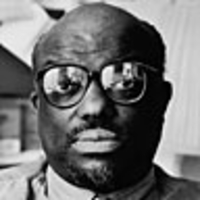
Soul Train ran for 35 seasons and was the first syndicated show featuring black popular entertainers. Soul Train is usually described as an important force in cultural change, but it was both more and less that that.
For all of the vitality so easily observed from the dancers on Soul Train, its greatest importance was never cultural or political. Profundity is neither expected from popular entertainment nor is it expected in television and film depictions of the enormously varied body of life lived by black Americans. Negroes are as far from any sort of monolith as one could possibly imagine, yet are usually thought of as most "authentic" when they are less well educated, inarticulate, lacking in manners, and anything else crudely adding up to being "street."
Soul Train did nothing for that problem, but it had an undeniable importance. It helped to redefine and, eventually, to kill segregated show business. That version of show business had its rules in place and they were there—like all undemocratic rules for America at large—only waiting to be broken, jumped over, or stomped.
Due to the role of the civil rights movement in chipping away traditional ethnic barriers and the tailspin brought on by the rising confusion, faddishness, and intellectual pollution of black nationalism, Don Cornelius was able to make sure that the breaking, the jumping over, and the stomping were in place for an hour, week after week. White people thought at first that the "natural" hairstyles, the African robes, and the rest of the ethnic outfits expressed a deep hostility against them, but soon found out that there was not much there other than a brand new market. This new demographic did not complain about product focused on its ethnicity. Fresh rules were in place and there was now more stuff to sell. The costumes did not impede or improve the dancing, which was perfect in itself, as were the many different ways of singing and playing rhythm and blues material. Black was certainly beautiful in commercial terms.
From 1972, the Soul Train Line Dance to Aretha Franklin's "Rock Steady"
Cornelius was one of the first to understand that there was a mood ready to be taken advantage of among these "new" black people. He took the segregation of the time by its horns and made something of it for himself, for his audience, and for the performers who appeared on Soul Train. This purportedly new vision of their ethnicity could all be packaged as products offering instant "pride." This added the political and cultural components, especially since so many urban black problems were then thought to exist because of a dearth of pride.
Soul Train made many believe the need for pride could be answered positively by a craning, spinning young man or woman preparing to do a split after flapping arms in imitation of a bird seen only in the open sky of the imagination. I doubt that any group had ever felt cultural pride expressed through fashions so outlandish that they could only be called exotic at best and inventive dance moves that pridefully hurled some bottles of Afro Sheen across the bows of white dance shows. Thinking well of oneself is a mutable thing; the VH-1 talking heads prove that pride is still felt for bottled sprays intended to keep hair styles "tight."
From the turn of the 20th century to the big bang of Soul Train, Negroes often grumbled about how many white people lifted their entire styles from black performers and became stars in the process. Now that their syndicated time in popular music came once a week, Negroes could strut all of the fashion stuff and the steps that they had learned. Dance floors proved that a fresh trend was in place, the explosion happened and the immediate popularity made Soul Train a show business phenomenon. It was a strong earner and continued to be one.
Andy Warhol could have been talking about popular entertainment when he said that he liked making art and making money but that making money was the greatest art of all. It is doubtful that Warhol would have known that he was describing the erosion of the trends of black youth with the arrival, first, of disco, and the imposed decadence that came with hip-hop.
The VH-1 talking heads include some academic airheads who predictably try to make a sociological case for hip-hop, but as the documentary shows, in 1993, Don Cornelius stepped away from Soul Train as the largely unmusical style of chanting over electronic beats became ever more popular.
Hip-hop did not fit his taste because Cornelius was so old-school that he still loved to hear bands play and rhythm and blues singers sing. He had seen and heard the best and felt that it was time for show business to do the best that it could with what amounted to "the rest."
Also from 1972, Harold Melvin and the Blue Notes performing "If You Don't Know Me By Now"
Cornelius had come up when one aspect of manhood among musicians was fully realized—when a tender and compelling love song could be delivered. A younger black woman I know asserts that black youth culture lost a great deal when young men ceased to value the affection for women heard and perhaps learned from the great rhythm-and-blues singers.
Hip-hop at its most popular was just too hostile to women for Cornelius. He probably knew that it was only a black version of heavy metal hostility in genetic blackface. Biggie Smalls also knew what was going on because he told Lil' Kim that Madonna had set the direction, and that they were now selling sex. Uh oh. So much for black authenticity and "keeping it real."
The disaffiliated white kids in black outfits, combat boots, and leather could scream insults and threats at authority, but the hip-hop thugs and buffoons trumped them by claiming to have achieved "street cred" though drug sales, murderous gang activity, pimping, and all of the other slime found in the filthiest corners of the slop jar of black "street" culture. In this sense "street" means criminal—not urban, not lower class, not youth itself. We also need to remember that the criminal is part of the smallest minority in any community.
While Americans claim to be contemptuous of aristocracy, they still swoon before whatever is considered authentic, especially if it comes from somewhere below the bottom. Things have changed for hip-hop, however. Society, ethnic or not, seems to have tired of the small vocabulary and the ever smaller "thoughts" blooming through the concrete.
At some point, the harmless and uplifting vitality of inventive black youth dancing may return and it will make us feel somewhat happier. That is what affirmation does, and was what it meant when Soul Train was at the height of its power. This may have disappeared by the mid-1980s, but it does not matter at all: Affirmation is the greatest comeback kid in the history of the species. It will always return and live up to that old saying from the 1960s: Have No Fear; Soul Is Here.
Stanley Crouch's culture pieces have appeared in Harper's, The New York Times, Vogue, Downbeat, The New Yorker, and more. He has served as artistic consultant for jazz programming at Lincoln Center since 1987, and is a founder of Jazz at Lincoln Center. In June 2006 his first major collection of jazz criticism, Considering Genius: Jazz Writings, was published. Next year the first volume of his long-awaited biography of Charlie Parker will appear.





